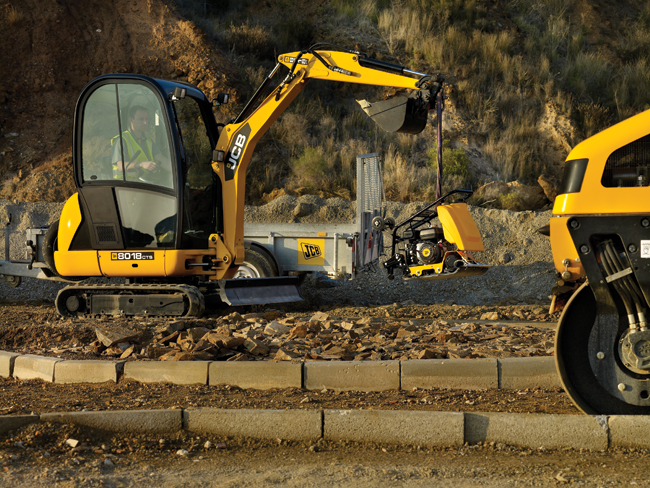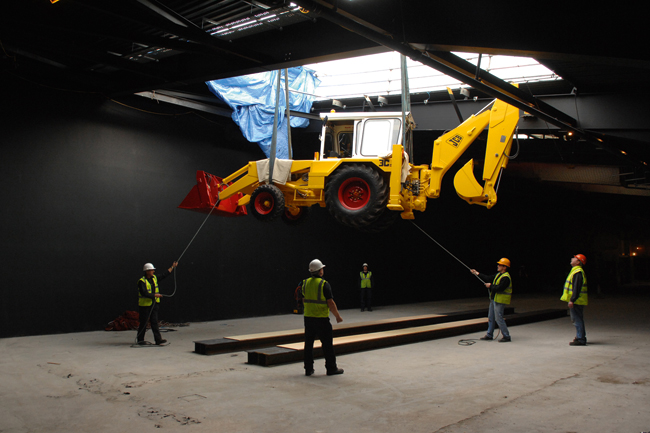A CE Editor in England
JCB may be one of the world’s top five manufacturers of construction equipment, but its home is still the rural green Rochester countryside of Staffordshire, England. From its pastoral English headquarters, JCB has become a global leader in construction, agricultural and compaction equipment, directing some of the most exciting developments in North America today from its construction machinery base of operations.
In late June, journalists from all over Europe and North America (including Compact Equipment) visited JCB’s world headquarters in the United Kingdom to discuss the brand’s next generation of equipment.
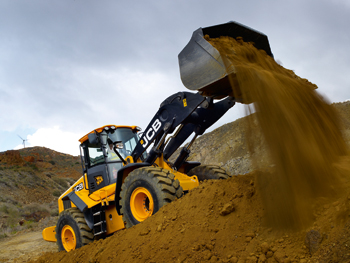 Appropriately, the two-day event started off with a press conference on June 27 at JCB’s Power Systems factory, where the company unveiled its most interesting new offering. The conference highlighted the company’s unique Ecomax engines, which have met U.S. Tier 4 Interim/EU Stage IIIB emissions standards without a diesel particulate filter (DPF), making JCB one of the few equipment and engine manufacturers in the world to bypass intrusive after treatment devices.
Appropriately, the two-day event started off with a press conference on June 27 at JCB’s Power Systems factory, where the company unveiled its most interesting new offering. The conference highlighted the company’s unique Ecomax engines, which have met U.S. Tier 4 Interim/EU Stage IIIB emissions standards without a diesel particulate filter (DPF), making JCB one of the few equipment and engine manufacturers in the world to bypass intrusive after treatment devices.
JCB is relying on innovative in-cylinder technologies, citing a patent pending combustion process that brings together ultra-high injection pressures of 29,000 psi in the common rail system, with a variable geometry turbocharger for rapid response at low rpm, creating a cleaner more efficient burn. Cooled exhaust gas recirculation (EGR) is used to further reduce emissions, passing a small amount of the exhaust gas back through the engine to cool the combustion process and reduce Nitrogen Oxides (NOx) within the cylinder.
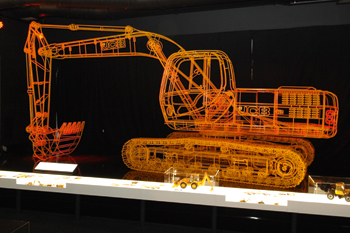
“We didn’t look at Tier 4 as an inconvenience. We seized it as an opportunity to build even more efficiency, more performance and more productivity into our machines,” said Tim Burnhope, JCB’s chief innovation officer. “We innovated our design to make machines that are stylish and practical in both form and function. Most of all, we innovated to make sure our customer gets the lowest possible cost of ownership.”
In addition, JCB pointed out that this no after treatment approach makes it possible for its dealers to recalibrate the Ecomax engine for used equipment that is sold into lesser regulated countries with higher sulphur content fuels — a huge bonus for contractors looking to sell equipment down the road. JCB’s Ecomax engine will be fitted into machines spanning the 74- to 173-hp range, including JCB backhoe loaders, Loadall telescopic handlers, wheeled loading shovels, the TM range of telescopic boom wheeled loaders, JS excavators, rough terrain forklifts and skid steer loaders.
Day Two
The second day started off with another press conference, this time in the company’s impressive theater located in its world headquarters. This event recapped the Ecomax engine’s benefits as well as showcased new equipment offerings outfitted with the Tier 4 compliant powerhouse.
“JCB continues to build on the momentum of the launches from earlier this year such as at Intermat,” Burnhope said during the conference. “In fact, this year we’ll unveil 66 new products — more than we’ve ever done in a single year in our history.”
Next on the agenda was a trip to JCB’s Ashbourne demo ground where fireworks accompanied an exciting display of JCB’s 2012 Innovations including the 8018 CTS mini excavator. This small, but robust digger will compete in the 1.5-ton sector and features a 52 percent increase in load holding capacity and an 11 percent increase in dig depth (stretching to an impressive 9 ft, 2 in.).
“This new machine has been developed after extensive consultation with our customers, dealers and end-users,” said Burnhope. “We have made more than 30 detailed improvements which will mean lower operating costs and enhanced productivity, comfort and safety.”
The 8018 CTS also received a makeover thanks to a new style fabricated box boom which gives the machine a rugged and robust appearance. Its slim-line construction also gives excellent visibility down the trench while digging. All the dig-end hoses are also routed through the inside of the boom offering excellent protection when digging narrow trenches.
From there, journalists broke off into groups to check out the individual machines until the clouds opened up and rain flooded the demonstration areas. Members of the press huddled together in one of the demo ground’s sheds and JCB staff continued on with the product demos. Product managers highlighted the features and advancements of the different product lines, while operators took the shiny new machines for a spin through puddles and plenty of mud.
The sun broke through just in time for lunch and gave everyone a chance to dry off. After that, the North American journalists were treated to a tour of JCB’s Heavy Products factory, as well as an afternoon tea at the company’s headquarters with Alan Blake, CEO of JCB and Graeme Macdonald, COO. To cap off the day, we received a sneak peek at the company’s new museum, “The Story of JCB.” This excellent exhibition includes 14 zones that takes visitors on a journey through time, starting in the 1820s, when the Bamford family were blacksmiths in Uttoxeter through to the present day and JCB’s ECO range of fuel-saving machines.
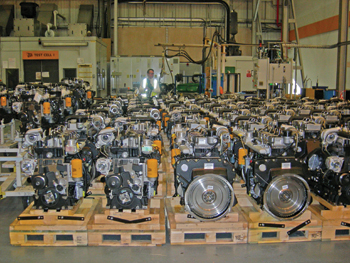
Ten landmark JCB machines, including a 1962 JCB Mark III backhoe loader, were craned through the roof as the attraction took shape. The centerpiece of the exhibition — and my favorite attraction — is a giant skeletal model of a JCB JS200 tracked excavator (shown above left). The machine was built to scale out of 8-mm steel rod and created by renowned artist Benedict Radcliffe. According to the company, the finished artwork took five months to complete and weighs around 2 tons — a tenth of the weight of the actual machine it represents.
Pam Kleineke is associate editor of Compact Equipment, based in Peninsula, Ohio.

